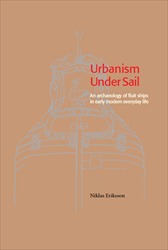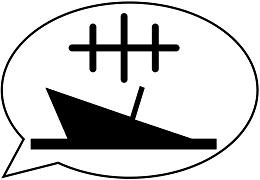P2 - Loggen
Ny marinarkeologisk avhandling om flöjter
- Details
- Category: Aktuellt
- Created: Friday, 05 September 2014 09:25
- Published: Friday, 05 September 2014 09:25
- Written by Pär Ahlgren
- Hits: 6576
I dagarna har avhandlingen "Urbanism Under Sail - An Archaeology of Fluit Ships in Early Modern Everyday Life" publicerats. 
Den beskriver den förr så vanliga skeppstypen, som trots sin rika förekomst har lämnat få spår efter sig. I Östersjon bräckta vatten finns dock flera välbevarade vrak som genom arkeologi kan berätta om den för handeln och utvecklingen av civilisationen så viktiga fartygstypen. Hur man levde ombord och använde skeppen, samt hur de påverkat även livet på land. Boken visar bland annat ur man genom arkeologi kan få fram inte bara skeppsbyggnadstekniska detaljer eller uppgift om lasten, utan hur arkeologi även kan visa hur människorna som på fartyget där levde, tyckte, kände och tänkte.
Abstract
In the seventeenth- and early eighteenth centuries, fluits were the most common type of merchant ship used in Baltic trade. Originally a Dutch design, the majority of all goods transported between Sweden and the Republic was carried on board such vessels. Far from all voyages reached their destination. Down in the cold brackish water of the Baltic, the preservation conditions are optimal, and several of these unfortunate vessels remain nearly intact today. Although thousands of more or less identical fluits were built, surprisingly little is known about the arrangement of space on board, their sculptural embellishment and other aspects that formed the physical component of everyday life on and alongside these ships. Fluits were a fixture in early modern society, so numerous that they became almost invisible. The study of wrecks thus holds great potential for revealing vital components of early modern life. Inspired by phenomenological approaches in archaeology, this thesis aims to focus on the lived experience of fluits. It sets out to grasp for seemingly mundane everyday activities relating to these ships, from the physical arrangements for eating, sleeping and answering nature's call, to their rearrangement for naval use, and ends with a consideration of the architectonical contribution of the fluit to the urban landscape. Keywords: Seventeenth century, Urbanism, Shipwrecks, Historical Archaeology, Buildings Archaeology, Nautical Archaeology, Sweden, the Netherlands, Fluit
Avhandlingen kan nu laddas ner eller beställas i fysiskt format på Södertörns Högskolas webbsida:
http://bibl.sh.se/publikationer/vara_publikationer/Urbanism_Under_Sail/diva2_740347.aspx
Författaren Niklas Eriksson kommer även tala på seminariet på Vasamuseet söndagen den 21:a september som P2-Svenskt Vrakskydd arrangerar tillsammans med Sjöhistoriska Museet.
Lyssna på intervjuv med professor Johan Rönnby som varit handledare under arbetet med avhandlingen:
https://soundcloud.com/#sodertornshogskola/kunskapsresan-vad-ska-vi-gora-med-alla-hundratusentals-skeppsvrak-pa-ostersjons-botten/s-zYxRd?in=sodertornshogskola%2Fsets%2Fkunskapsresan
Direktlänk till avhandlingen i PDF-format:
http://sh.diva-portal.org/smash/get/diva2:740347/FULLTEXT02.pdf